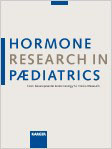Cinek O. Horm Res Paediatr. 2011 76 Suppl 1:52–6. Epub 2011 Jul 21. IF: 2.044

Abstract:
BACKGROUND: Over the past 15 years, the incidence of type 1 diabetes mellitus (T1DM) in Central and Eastern Europe has grown rapidly from an initially low rate. This growth cannot be attributed to genetic factors: it appears that changing environmental exposures are responsible, though no single environmental factor can be pinpointed. Since the end of the 1980s, the populations in this part of Europe have experienced rapid changes that are being investigated as possible etiologic environmental factors. These changes may not differ in nature from similar changes observed in Western Europe, yet they undoubtedly differ in the speed of the change. This is exemplified by recent changes in reproductive behavior that resulted in the extremely swift increase in average maternal age and varying patterns of crude natality observed in some populations. However, studies performed in Central and Eastern Europe have not revealed any unique patterns of associations with putative risk factors. CONCLUSION: No data indicate that Eastern or Central European countries form any special entity with respect to T1DM epidemiology. The T1DM incidence trends should continue to be actively observed, as such observations are a potential source of information on disease etiology.
-mk-
